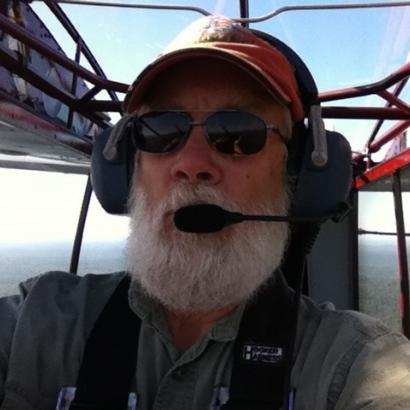NEW YORK CFI INCLUDES RAF CODE OF CONDUCT AND GRASS FIELD TECHNIQUES
The Recreational Aviation Foundation (RAF) has filled an important GA niche in protecting and promoting recreational aviation opportunities. Along with its work on the ground to preserve, maintain and create airstrips for recreational access, the RAF emphasizes in the air pilot preparation for safely operating in and out of these airstrips.
New York Liaison Russ Holland is a CFI who encourages his students to become comfortable and safe operating off-pavement. Holland trains from Cold Brook, NY and is a member of the RAF’s Safety and Education Committee. He incorporates the RAF Code of Conduct into his curriculum.

“As a CFI, I encourage both a love of, and respect for grass airfield flying,” he says. His students experience numerous grass airfield takeoffs and landings. “I stress that it’s not actual backcountry training, but an exposure to what is both great and different about this type of flying.” Competency off-pavement exposes pilots to a multitude of opportunities, he feels, adding, “It’s different in that the sight picture, judgment and flying skills are different from those required for more standard and controlled airports.”
The RAF has always emphasized safety and education and formed its Safety and Education Committee early in its mission. Chaired by RAF Board member Alan Metzler, the group includes Master CFIs, backcountry flight instructors, a former Naval aviator now captain for a major airline, and a producer of videos on backcountry techniques. The committee meets regularly to further the availability of resources involving recreational flying. The RAF’s Safety and Education tab lists a growing list of resources for pilots. The keystone of the RAF safety message is its Code of Conduct which forms the basis for Holland’s approach. Its first four points are:
• Make safety your highest priority, acting with responsibility and courtesy.
• Develop the skills necessary for safe backcountry aviation. Use instructors and knowledgeable pilots to seek excellence in airmanship through training and practice.
• Establish and adhere to personal minimums based on objective evaluation of ability.
• Research and practice prudent operating practices for the area and airfield you wish to explore. i.e, reporting points and altitudes.
Holland considers his one-on-one approach a resource for pilots to self-evaluate and educate themselves to ensure safe enjoyment of this type of flying. He depends on what the RAF calls “Know your Airplane – Know Yourself.” Inspired by Dave Dunteman’s “Back to Basics” lessons, Holland uses Boonville’s 2,800-ft grass strip (1NK7). “It’s not a competition, but an opportunity to land and take off on a grass field marked out in 100-ft increments. Participating pilots calculate their takeoff and landing distances for the day’s conditions considering density altitude, gross weight, wing loading, and surface condition – how the length of the grass will affect performance, for example. Volunteers then observe approaches and landings by recording the distances from a marked “threshold” to the point the aircraft stops. For takeoffs, the off-the-ground distance and estimated distance to clear a 50-ft obstacle is recorded. Pilots compare that information to their estimates and use it to form their personal limits for a given day and conditions.
Holland rewards each of his successful students with a membership to the Recreational Aviation Foundation, hoping the fun and demands of that type of flying will keep them engaged throughout their pursuit of flying. “I encourage them to join us in our initiatives, and share our love of grass airfield and backcountry flying – safely.”
Submitted on November 9, 2016.
